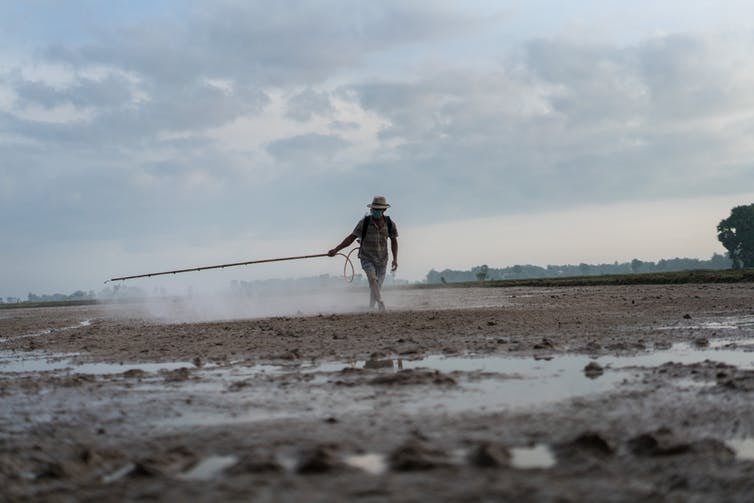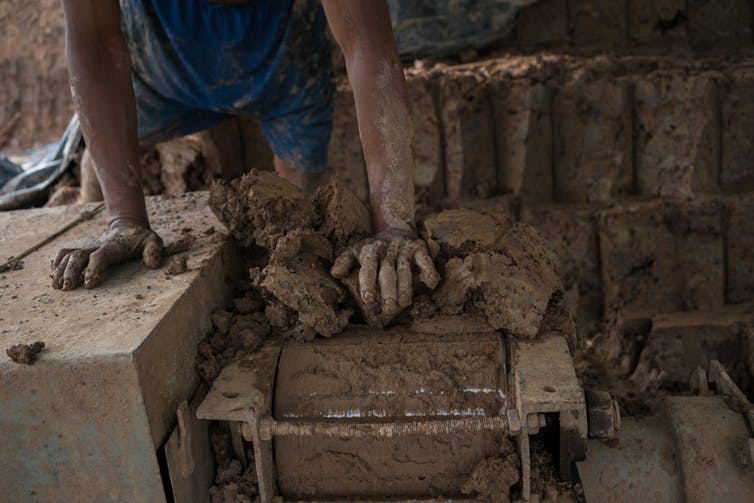Cambodia's construction boom is a display of how the west profits from modern slavery
In Phnom Penh, modernisation has been fuelled by forced adult and child labour – just one example of how exploitation is embedded in systems of global commerce and growth

Your support helps us to tell the story
From reproductive rights to climate change to Big Tech, The Independent is on the ground when the story is developing. Whether it's investigating the financials of Elon Musk's pro-Trump PAC or producing our latest documentary, 'The A Word', which shines a light on the American women fighting for reproductive rights, we know how important it is to parse out the facts from the messaging.
At such a critical moment in US history, we need reporters on the ground. Your donation allows us to keep sending journalists to speak to both sides of the story.
The Independent is trusted by Americans across the entire political spectrum. And unlike many other quality news outlets, we choose not to lock Americans out of our reporting and analysis with paywalls. We believe quality journalism should be available to everyone, paid for by those who can afford it.
Your support makes all the difference.Modern slavery is a prominent term of late. Thus far, efforts to deal with it have tended to focus on criminality and the explicit imprisonment of people. Yet tackling modern slavery in a meaningful sense isn’t merely a question of identifying culprits and freeing victims. To do so is to treat only the symptoms.
Conditions that shock us about modern slavery – forced labour, toiling children, captivity – are not acts perpetrated by distant strangers in far off lands, but components of a system from which we in the west greatly benefit.
Take Cambodia for instance. The recent Blood Bricks research project, from which colleagues and I organised an exhibition of photographs, exposes debt-bonded labour in the brick making industry. These striking visual accounts of daily life in production show adults and children alike compelled to work in horrific conditions. But they also highlight modern slavery as a structural issue, deeply enmeshed in systems of global commerce and growth.
Despite their immediate impact, though, the reaction to these images is often to compartmentalise; to place them in the box marked “out there”, too unrelatable to everyday experience. After all, it isn’t long since Cambodia’s capital city Phnom Penh was a ghost town, forcibly evacuated by the Khmer Rouge of its two million inhabitants and left as an eerie wasteland: empty, silent and rapidly returning to nature.
Yet today this is a city on the up. The once sleepy French colonial capital is in the midst of an internationally funded building boom. Condominiums and office blocks are springing up like rice stalks: 30,000 building projects have been registered since 2000, and some 16,000 condo units will be added in 2018.

This much-celebrated urban turnaround is rooted in international investment to which the UK is a significant contributor. British companies have a stake in many of these buildings and help to construct many more. The UK is Cambodia’s largest European trading partner, importing more than $1bn worth of goods each year. British consumers, like those in many other western nations, therefore benefit from cheaply made goods from countries to which they pay little attention.
A vicious cycle
Scrutiny of such trading relationships has long been buried beneath good news stories of Cambodia’s urban growth. Yet the long shadows of the country’s edifices of wealth and progress conceal a deeper darkness. They are built from bricks moulded by the country’s poorest inhabitants, bonded into labour in the kilns that fire the nation’s growth. This is a job that nobody chooses, but that chooses its participants through structural conditions.

Those who enter the brick industry are the poorest farmers in some of the poorest regions in Cambodia. Their families have always had little of anything. In recent years their struggles have been rendered unsustainable by the twin forces of market and environment, which intensify vulnerability via a vicious cycle of risk, borrowing and debt.
First of all, the unfettered advent of microfinance has resulted in a transition to farming on credit, leaving smallholders with huge debts in advance of their harvest, hoping a successful crop will clear them.
Then, climate change lies in wait to tip the odds against them. While in years past, the gamble made by smallholders may have paid off more times than not, today they are at the mercy of a further axis of misfortune. Cambodia’s changing rainfall patterns have ravaged smallholder agriculture in recent years, as the predictable rhythm of early and late season rains has given way to an onslaught of floods and droughts. Almost every year is now a story of coping rather than doing; of managing in whatever way possible the task of farming in an environment no longer suited to the age-old methods.
Farmers try everything, from irrigation to new techniques to piling debt upon debt. Yet regardless of their struggles, the odds are stacked against smallholders and every year the army of landless – stripped of their ancestral plots by debt – grows larger. The result is a rootless, desperate and indebted workforce, highly vulnerable to exploitation, either in the brick kilns or elsewhere.
And herein lies the problem. Modern slavery in the form of child labour and debt bondage is endemic in the Cambodian brick-making industry. It is not a question of a few kilns, but every kiln. Almost every brick on which the nation’s construction boom rests is fired in kilns where children labour and adults languish for years in bondage.
Yet this is an issue that can’t be resolved at its endpoint alone. What has allowed debt bondage to become so prevalent and normalised is the way in which Cambodia’s poorest have been made to bear the burden of their changing climate without provision for their well-being, or protections against the vagaries of the market.
Not only is the west overwhelmingly responsible for the emissions driving changes to the global climate, it is also increasingly the beneficiary of its impacts. As long as we allow ourselves to profit from international supply chains, while reneging responsibility for those who work in them, we shall remain complicit in the practices that purport to shock us around the world.
Laurie Parsons is a postdoctoral research fellow at Royal Holloway. This article first appeared on The Conversation (theconversation.com)
Join our commenting forum
Join thought-provoking conversations, follow other Independent readers and see their replies
Comments